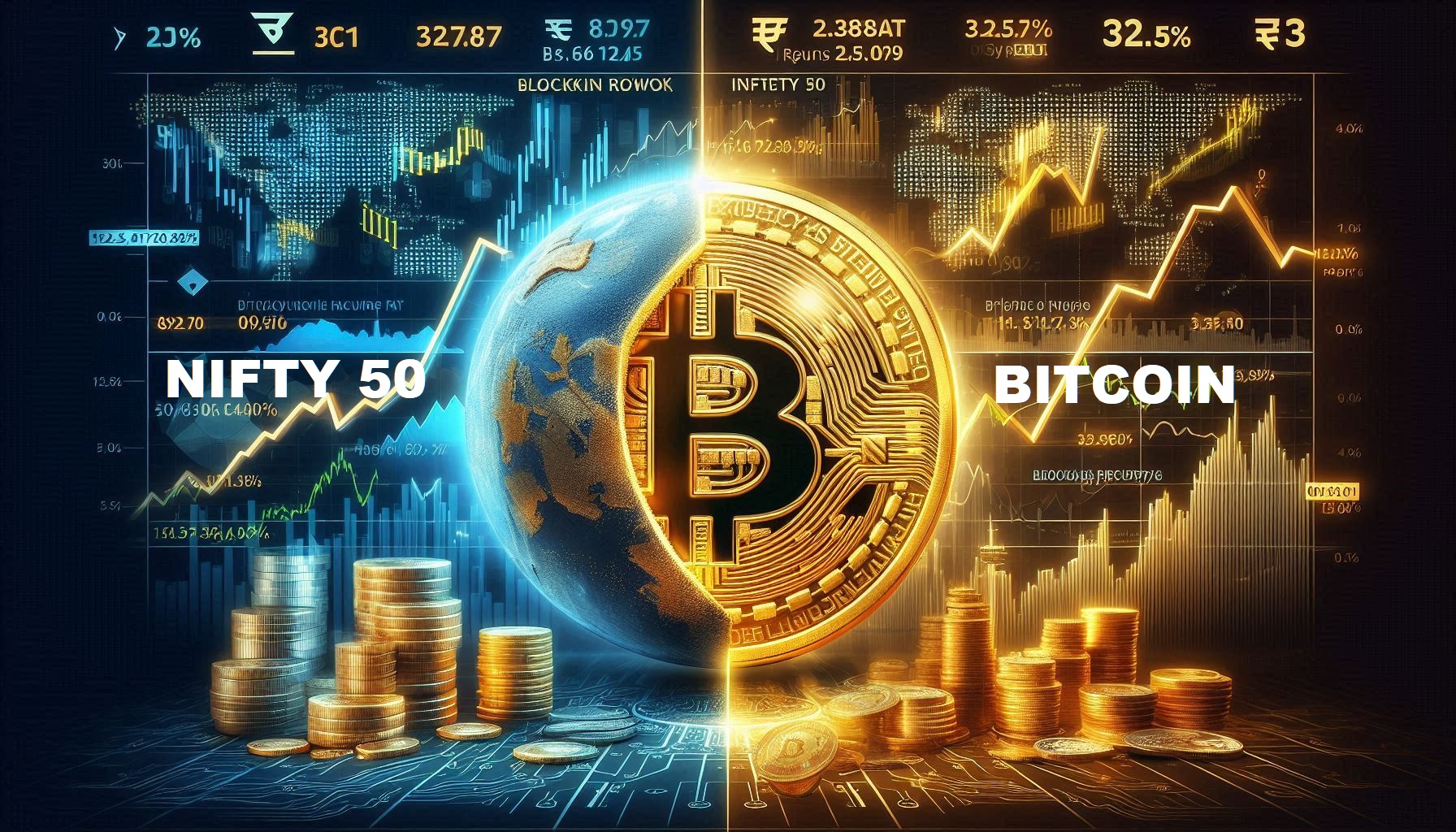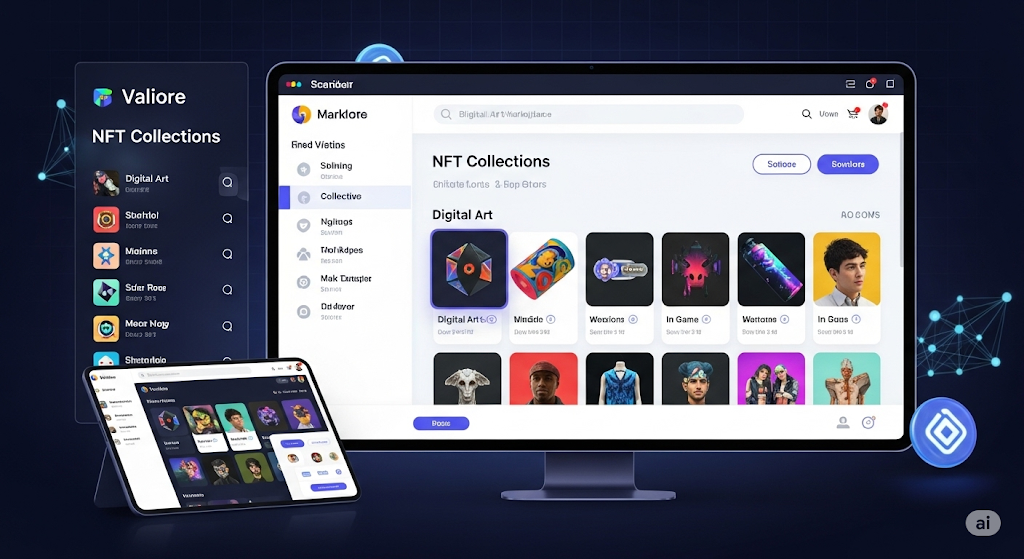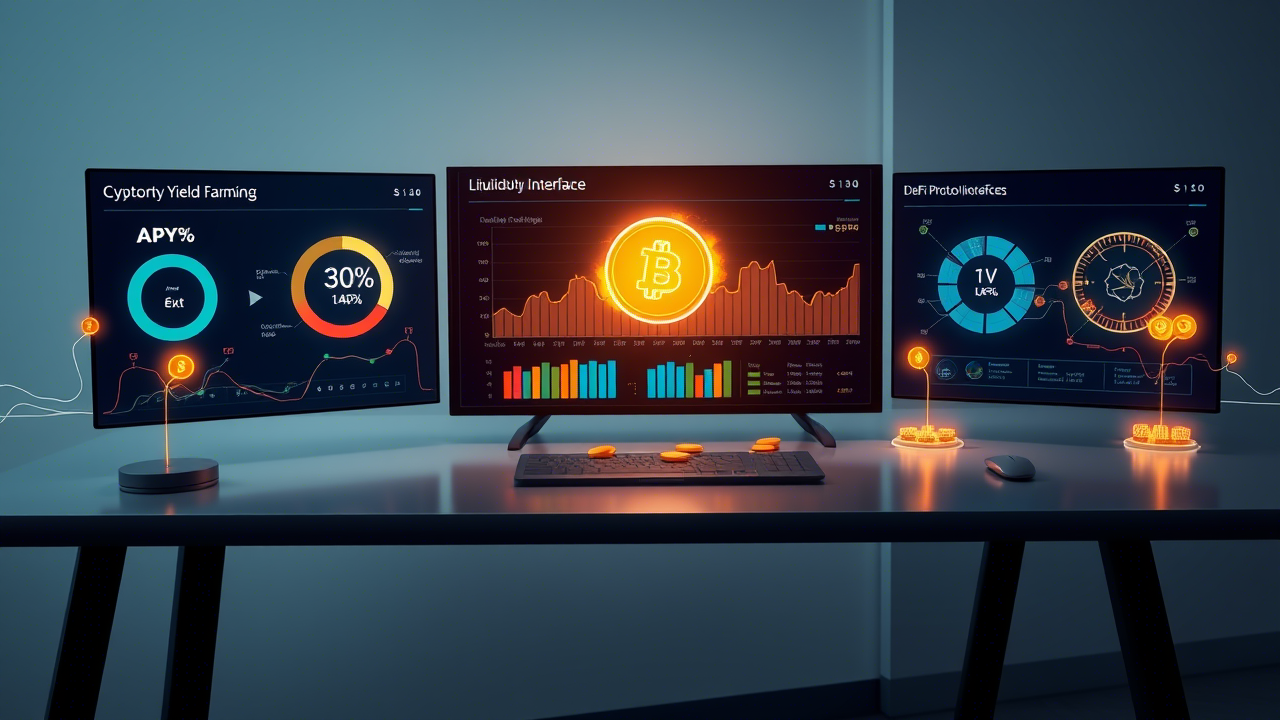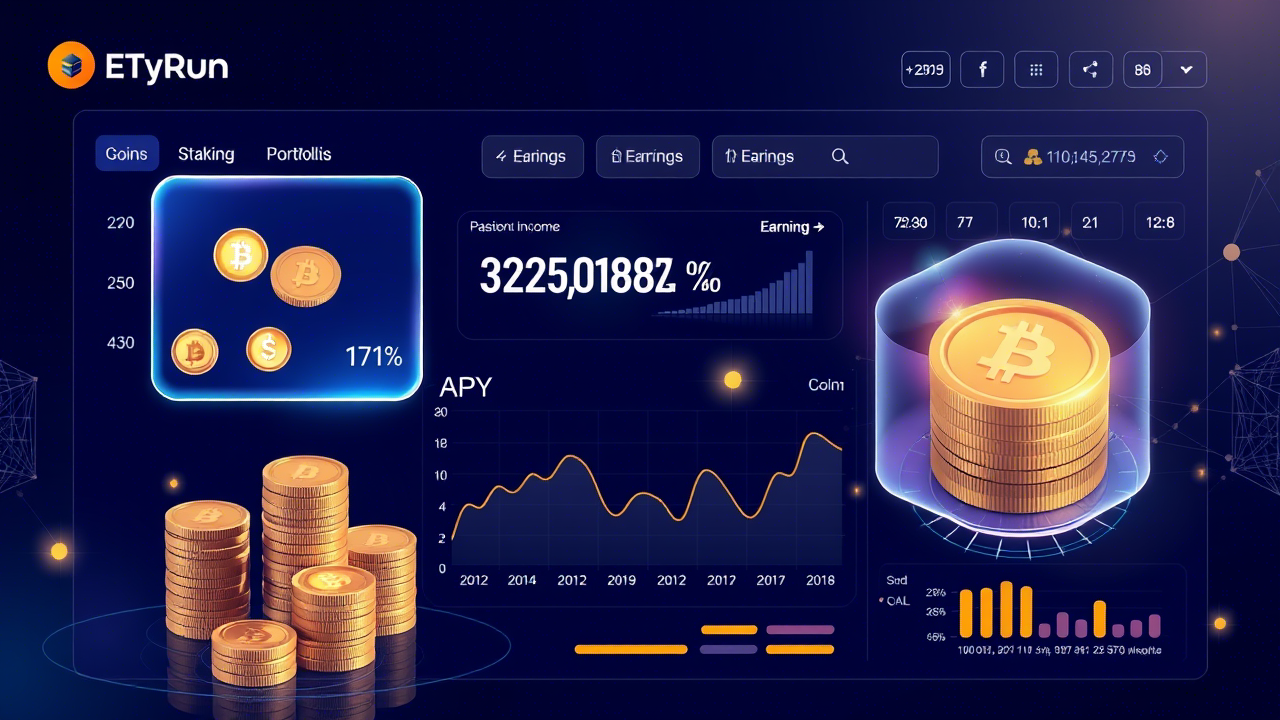The cryptocurrency landscape has evolved dramatically beyond Bitcoin’s initial vision, creating a vast ecosystem of alternative cryptocurrencies that offer unique investment opportunities. While Bitcoin and Ethereum dominate headlines, altcoins represent the innovation frontier where breakthrough technologies and substantial returns often emerge first.
Understanding altcoins becomes crucial for investors seeking diversification beyond traditional crypto giants. These alternative cryptocurrencies span various sectors from decentralized finance to gaming, each addressing specific market needs that Bitcoin and Ethereum cannot fully satisfy. For beginners looking to start their journey, our cryptocurrency for beginners guide provides essential foundation knowledge before diving into altcoin investments.
Understanding Altcoins Meaning and Market Position
Altcoins, short for “alternative coins,” represent every cryptocurrency except Bitcoin. This broad category encompasses thousands of digital assets, each designed with specific purposes and technological improvements over Bitcoin’s original framework.
The altcoin market serves as a testing ground for blockchain innovations. Many features now standard in cryptocurrency, including smart contracts, proof-of-stake consensus, and cross-chain interoperability, originated in altcoin projects before broader adoption.
Market dynamics for altcoins differ significantly from Bitcoin. While Bitcoin often acts as digital gold, altcoins frequently demonstrate higher volatility and growth potential. This characteristic makes them attractive for investors seeking higher returns while accepting increased risk.
Investment strategies for altcoins require understanding their utility, adoption potential, and underlying technology. Unlike Bitcoin’s store-of-value narrative, altcoins often derive value from solving specific problems or enabling new applications. The foundation of this understanding starts with blockchain technology and how different projects implement innovative solutions.
Comprehensive Altcoins List and Categories
The altcoin ecosystem spans numerous categories, each serving different market segments and investment strategies. Understanding these categories helps investors identify opportunities aligned with their risk tolerance and investment goals.
Smart Contract Platforms form the largest altcoin category after Bitcoin. These platforms enable developers to build decentralized applications, creating entire ecosystems around their native tokens. According to Wikipedia’s comprehensive overview, smart contract platforms represent a significant evolution from Bitcoin’s original design. Notable examples include Solana, Cardano, and Polygon, each offering unique approaches to scalability and functionality.
DeFi Tokens represent decentralized finance protocols that recreate traditional financial services without intermediaries. These altcoins derive value from their protocols’ usage, including lending, borrowing, and trading volumes. Popular DeFi tokens include Uniswap, Aave, and Compound.
Layer 2 Solutions address scalability challenges in existing blockchains. These altcoins improve transaction speed and reduce costs while maintaining security. Examples include Arbitrum, Optimism, and Polygon, which enhance Ethereum’s capabilities.
Privacy Coins focus on anonymous transactions, addressing concerns about blockchain transparency. Monero, Zcash, and Dash represent this category, though regulatory scrutiny has increased for privacy-focused cryptocurrencies.
Gaming and NFT Tokens capitalize on blockchain gaming and digital collectibles growth. These altcoins power gaming economies and NFT marketplaces, with examples including Axie Infinity, The Sandbox, and Decentraland.
Analyzing Altcoins Price Movements and Market Dynamics
Altcoin price analysis requires understanding factors beyond traditional market forces. Unlike stocks or bonds, altcoins often experience price movements based on technological developments, partnership announcements, and regulatory changes.
Technical analysis plays a crucial role in altcoin trading. Price patterns, volume indicators, and momentum oscillators help identify entry and exit points. However, altcoins often exhibit more erratic price behavior than Bitcoin, requiring adjusted analytical approaches.
Fundamental analysis for altcoins focuses on project utility, adoption rates, and development activity. Metrics like active addresses, transaction volumes, and GitHub commits provide insights into project health and growth potential.
Market sentiment significantly impacts altcoin prices. Social media trends, influencer endorsements, and community engagement can drive substantial price movements, sometimes disconnected from fundamental value. Our guide on crypto trading strategies covers how to navigate these sentiment-driven markets effectively.
Correlation analysis between altcoins and Bitcoin reveals important trading patterns. During bull markets, altcoins often outperform Bitcoin, while bear markets typically see stronger correlations and synchronized declines.
Altcoins Market Cap Analysis and Investment Sizing
Market capitalization ranking provides insights into altcoin adoption and investment potential. Larger market cap altcoins typically offer more stability but lower growth potential compared to smaller projects.
Understanding market cap categories helps investors assess risk levels. Large-cap altcoins (above $10 billion) include established projects like Ethereum, BNB, and Solana. Mid-cap altcoins ($1-10 billion) offer balanced risk-reward profiles, while small-cap projects (under $1 billion) present higher risk but potentially explosive returns.
Circulating supply versus total supply affects price potential. Altcoins with significant locked or unreleased tokens may face selling pressure as supply increases, impacting long-term price appreciation.
Fully diluted valuation considers maximum token supply, providing a more complete picture of altcoin value. This metric helps investors understand potential dilution effects and compare projects more accurately.
Market cap rankings shift frequently in altcoin markets. Projects can gain or lose significant value rapidly based on technological developments, partnerships, or market sentiment changes.
Altcoin Season Index and Market Cycles
The altcoin season index measures when altcoins outperform Bitcoin, indicating optimal timing for altcoin investments. This metric helps investors understand market cycles and position portfolios accordingly.
Altcoin seasons typically occur during Bitcoin bull markets when investor confidence spreads to alternative cryptocurrencies. During these periods, altcoins often experience outsized gains as capital flows from Bitcoin into smaller projects.
Historical patterns show altcoin seasons following Bitcoin price consolidation periods. As Bitcoin stabilizes, investors seek higher returns in altcoins, creating favorable conditions for alternative cryptocurrency investments.
Monitoring the altcoin season index helps investors optimize entry and exit timing. Values above 75 indicate strong altcoin performance, while readings below 25 suggest Bitcoin dominance.
Market cycle understanding enables strategic portfolio allocation between Bitcoin and altcoins. Successful investors often increase altcoin exposure during favorable conditions while maintaining Bitcoin positions for stability.
Top Altcoins to Buy: Investment Opportunities
Identifying promising altcoins requires evaluating multiple factors including technology, team, market opportunity, and competitive advantages. Successful altcoin selection combines fundamental analysis with market timing. For those ready to make their first purchase, our comprehensive guide on how to buy Bitcoin provides essential steps that apply to most altcoin purchases as well.
Ethereum remains the dominant smart contract platform despite competition. Its extensive developer ecosystem, institutional adoption, and ongoing upgrades maintain its position as the leading altcoin investment.
Solana offers high-speed transactions and low costs, attracting developers and users seeking alternatives to Ethereum. Its growing ecosystem includes DeFi, NFTs, and gaming applications.
Cardano emphasizes academic research and peer-reviewed development. Its methodical approach and focus on sustainability appeal to investors seeking long-term value creation.
Polygon provides Ethereum scaling solutions, reducing transaction costs and increasing speed. Its partnerships with major companies and growing adoption make it attractive for infrastructure investors.
Chainlink dominates the oracle market, connecting blockchains to real-world data. Its essential role in DeFi and smart contract functionality creates strong demand for LINK tokens.
Altcoins with Ethereum and Ripple Potential
Certain altcoins demonstrate characteristics similar to Ethereum and Ripple’s early development phases, suggesting potential for similar growth trajectories.
Avalanche combines high throughput with Ethereum compatibility, attracting developers and capital from Ethereum’s ecosystem. Its subnet architecture enables customized blockchain solutions for enterprises.
Fantom offers fast finality and low costs while maintaining Ethereum Virtual Machine compatibility. Its growing DeFi ecosystem and institutional partnerships suggest strong growth potential.
Algorand focuses on enterprise adoption and government partnerships, similar to Ripple’s institutional approach. Its pure proof-of-stake consensus and carbon-neutral operations appeal to ESG-conscious investors.
Polkadot enables interoperability between different blockchains, addressing a fundamental limitation in current cryptocurrency infrastructure. Its parachain architecture creates multiple revenue streams for DOT holders.
These projects combine technological innovation with real-world utility, characteristics that historically drive substantial altcoin appreciation.
Evaluating Altcoins 1000x Potential for 2025
Identifying altcoins with extreme growth potential requires understanding emerging trends and technological breakthroughs that could drive mass adoption.
Artificial Intelligence Integration represents a major growth catalyst. Altcoins that successfully integrate AI capabilities for trading, content creation, or data analysis may experience significant appreciation.
Real World Asset Tokenization creates new investment opportunities. Projects enabling fractional ownership of real estate, commodities, or intellectual property could capture substantial market value.
Cross-Chain Infrastructure becomes increasingly important as blockchain adoption grows. Altcoins providing seamless interoperability solutions may benefit from network effects and increased usage.
Gaming and Metaverse Applications continue expanding, creating demand for tokens that power virtual economies. Projects with strong gaming partnerships and active user bases show promise for substantial growth.
Regulatory Compliance Focus may benefit altcoins designed with regulatory requirements in mind. As governments establish cryptocurrency frameworks, compliant projects may gain competitive advantages.
Altcoins Dominance Chart Analysis
Altcoin dominance charts reveal market sentiment and capital allocation patterns between Bitcoin and alternative cryptocurrencies. Understanding these trends helps investors optimize portfolio timing and allocation.
Bitcoin dominance typically ranges between 40-70% of total cryptocurrency market capitalization. Higher dominance indicates flight to quality during uncertain periods, while lower dominance suggests risk-on sentiment favoring altcoins.
Ethereum dominance provides additional insight into smart contract platform adoption. Increasing Ethereum dominance often signals growing DeFi and NFT market activity, benefiting related altcoins.
Seasonal patterns in dominance charts help identify optimal investment windows. Altcoin dominance often increases during spring and summer months, coinciding with increased market activity and investor confidence.
Long-term dominance trends reveal structural changes in cryptocurrency markets. Declining Bitcoin dominance over time suggests increasing altcoin adoption and market maturation.
Risk Management for Altcoin Investment
Altcoin investment requires sophisticated risk management due to higher volatility and project-specific risks compared to Bitcoin and traditional assets.
Position Sizing becomes crucial for altcoin portfolios. Limiting individual altcoin positions to 5-10% of total portfolio helps manage concentration risk while maintaining upside potential.
Diversification Across Categories reduces sector-specific risks. Balancing investments across DeFi, gaming, infrastructure, and privacy coins creates more stable returns.
Due Diligence Processes must evaluate team credentials, technology audits, and tokenomics. Many altcoin projects fail due to poor execution or unsustainable economic models.
Liquidity Considerations affect exit strategies. Smaller altcoins may experience significant price impact during large trades, requiring careful timing and order management.
Regulatory Risk Assessment becomes increasingly important as governments develop cryptocurrency regulations. Projects with unclear legal status or privacy features face higher regulatory risks.
Building a Diversified Altcoins Portfolio
Successful altcoin portfolios balance growth potential with risk management through strategic diversification and systematic selection processes.
Core Holdings should include established altcoins with strong fundamentals and adoption. Ethereum, Solana, and Cardano typically form portfolio foundations due to their proven track records.
Growth Positions focus on mid-cap altcoins with strong development teams and clear use cases. These positions offer balance between stability and growth potential.
Speculative Allocations target small-cap projects with disruptive potential. These high-risk positions should represent small portfolio percentages but offer significant upside.
Sector Allocation spreads investments across different altcoin categories. Recommended allocations might include 40% smart contract platforms, 30% DeFi tokens, 20% infrastructure projects, and 10% emerging sectors.
Rebalancing Strategies maintain target allocations as market conditions change. Quarterly rebalancing helps capture gains from outperforming positions while maintaining risk discipline.
Altcoin Trading Strategies and Timing
Effective altcoin trading requires understanding market cycles, technical analysis, and sentiment indicators specific to alternative cryptocurrency markets.
Dollar-Cost Averaging helps manage altcoin volatility by spreading purchases over time. This strategy reduces timing risk while building positions in promising projects.
Swing Trading capitalizes on altcoin price swings using technical analysis. Support and resistance levels, moving averages, and momentum indicators guide entry and exit decisions.
Trend Following systems identify major altcoin trends and maintain positions until trend reversals occur. These strategies work well during altcoin seasons when trends persist for extended periods.
Mean Reversion strategies profit from extreme price movements by buying oversold conditions and selling overbought levels. This approach works well for established altcoins with historical trading ranges.
Event-Driven Trading focuses on news, partnerships, and development milestones that drive altcoin prices. Successful implementation requires monitoring project roadmaps and market catalysts.
Future Outlook for Altcoin Markets
The altcoin market continues evolving as blockchain technology matures and finds new applications across various industries and use cases.
Institutional Adoption drives demand for established altcoins with clear utility and regulatory compliance. Corporate treasuries and investment funds increasingly consider altcoin allocations.
Technological Advancement creates new altcoin categories and investment opportunities. Developments in artificial intelligence, quantum computing, and decentralized governance spawn innovative projects.
Regulatory Clarity benefits compliant altcoins while challenging privacy-focused or unregistered projects. Clear regulatory frameworks may increase institutional participation in altcoin markets.
Mass Adoption Catalysts include central bank digital currencies, corporate blockchain adoption, and mainstream payment integration. These developments create demand for underlying blockchain infrastructure.
Market Maturation leads to increased correlation with traditional assets during stress periods while maintaining growth potential during favorable conditions.
FAQ
What makes altcoins different from Bitcoin? Altcoins offer different features, use cases, and technological approaches compared to Bitcoin. While Bitcoin focuses on digital gold and store of value, altcoins typically provide smart contract functionality, faster transactions, lower costs, or specialized applications like privacy or gaming.
How do I evaluate which altcoins to invest in? Evaluate altcoins based on their technology, team, market opportunity, adoption metrics, and competitive advantages. Consider factors like active development, partnership announcements, user growth, and clear use cases for the project’s token.
What percentage of my crypto portfolio should be in altcoins? Portfolio allocation depends on risk tolerance, but many investors allocate 20-40% to altcoins while maintaining Bitcoin and Ethereum as core holdings. Start with smaller allocations and increase exposure as you gain experience and confidence.
When is the best time to buy altcoins? Altcoin seasons typically occur during Bitcoin bull markets when investor confidence spreads to alternative cryptocurrencies. Monitor the altcoin season index and market sentiment indicators to identify optimal entry points.
Are altcoins riskier than Bitcoin? Yes, altcoins generally carry higher risks due to smaller market caps, less liquidity, newer technology, and regulatory uncertainty. However, they also offer potentially higher returns and exposure to innovative blockchain applications.
How many altcoins should I hold in my portfolio? Diversification across 5-15 altcoins provides balance between concentration and over-diversification. Focus on different categories like smart contract platforms, DeFi tokens, and infrastructure projects to spread sector-specific risks.
Final Thoughts
Altcoin investment represents the frontier of cryptocurrency innovation, offering opportunities to participate in technologies that may reshape digital finance, gaming, and internet infrastructure. Success requires understanding market dynamics, conducting thorough research, and maintaining disciplined risk management.
The altcoin market rewards investors who identify promising projects early while maintaining realistic expectations about volatility and project failure rates. Building a diversified portfolio across different altcoin categories provides exposure to various blockchain innovations while managing concentration risk.
As the cryptocurrency ecosystem matures, altcoins will likely play increasingly important roles in specific applications and use cases. Investors who develop expertise in evaluating altcoin projects and timing market cycles position themselves to benefit from this ongoing digital transformation.
Remember that altcoin investment involves substantial risks, including total loss of capital. Never invest more than you can afford to lose, and consider altcoins as part of a broader, diversified investment strategy that includes traditional assets and established cryptocurrencies.












Leave a Reply